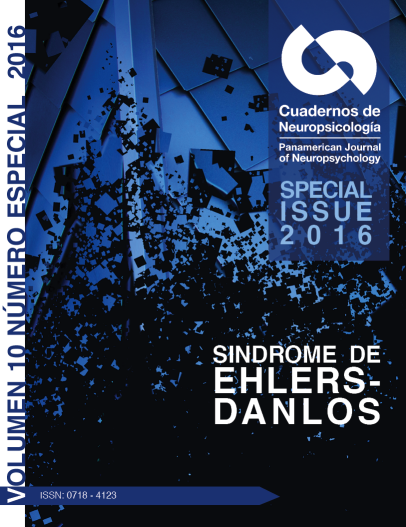Historia y Actualidad del SÃndrome de Ehlers-Danlos-Tschernogobow
Abstract
Resumen
El sÃndrome d’Ehlers-Danlos (SED) es un trastorno hereditario del tejido conectivo clÃnicamente identificado hace más de un siglo por los dermatólogos. Posteriormente reumatólogos y genetistas se implicaron en su descripción. Hoy en dÃa y pesar de su alta frecuencia, el SED es sub-diagnosticado debido al desconocimiento de su presentación clÃnica. Erróneamente es generalmente descrito insistiendo en aspectos espectaculares tales como el estiramiento cutáneo y las contorsiones excesivas, pasando asà por alto las manifestaciones multi-sistémicas que componen el cuadro descrito en la actualidad y que afectan severamente la salud fÃsica y psicológica de quienes lo padecen. La historia del SED ha conocido un destino paradójico. Conocer estos aspectos históricos puede ayudar, por una parte, a comprender la falta de reconocimiento actual de esta entidad clÃnica, y por otra parte, a concientizar a los profesionales de la salud de la importancia de su diagnóstico.Â
Palabras clave: sÃndrome de Ehlers-Danlos, hiperlaxitud articular, trastornos hereditarios del tejido conectivo, historia médica.Â
Â
Abstract
The Ehlers-Danlos syndrome (EDS) is an inherited disorder of connective tissue clinically identified more than a century ago by dermatologists. Later, rheumatologists and geneticists got involved in their description. Despite its high frequency, EDS is an underdiagnosed condition due to the lack of knowledge of its clinical presentation. Erroneously, EDS is generally described insisting on spectacular aspects such as skin hyperextensibility and excessive contortions, and the multisystemic manifestations that really composing the clinical picture, and that severely affect the physical and psychological health of those who suffer are neglected. The history of EDS has known a paradoxical fate. Knowing these historical aspects can help understand the current lack of recognition of this clinical entity and to raise awareness among health professionals of the importance of their diagnosis.
Key words: Ehlers-Danlos syndrome, joint hypermobility, hereditary disorders of the connective tissue, historical aspects.
Â
Resumo
A sÃndrome d’Ehlers-Danlos (SED) é um transtorno hereditário do tecido conectivo clinicamente identificado há mais de um século pelos dermatólogos. Posteriormente reumatólogos e geneticistas se implicaram em sua descrição. Hoje em dia e apesar de sua alta frequência, a SED é subdiagnosticada devido ao desconhecimento de sua apresentação clÃnica na comunidade médica. Erroneamente é geralmente descrita insistindo em aspectos espetaculares tais como o alongamento cutâneo e as contorsões excessivas, passando assim por alto as manifestações multissistêmicas que compõem o quadro descrito na atualidade e que afetam severamente a saúde fÃsica e psicológica de quem a padece. A história da SED conheceu um destino paradoxo, conhecer estes aspectos históricos pode ajudar, por uma parte, a compreender a falta de reconhecimento atual desta entidade clÃnica, e por outra parte, a conscientizar os profissionais da saúde da importância de seu diagnóstico. Â
Palavras-chave: sÃndrome de Ehlers-Danlos, articulações hipermóveis, transtornos hereditários do tecido conectivo, história médica. Â
Downloads
How to Cite
Issue
Section
License
Articles published in this journal are protected under the Creative Commons Attribution-NonCommercial-ShareAlike 4.0 International (CC BY-NC-SA 4.0) license. This means that authors retain full rights over their research and publications at all times. As a journal, we fully respect and promote the principles of open access established by this license, allowing the work to be shared, adapted, and distributed for non-commercial purposes, provided that appropriate credit is given to the authors and any derivative works are licensed under the same terms.
Authors are responsible for obtaining the required permission when they wish to reproduce part of the material (figures, etc.) from other publications.
Likewise, CNPs allows authors to host in their personal sites or other repositories that they deem convenient the Final and Definitive Version of the published article with the format assigned by the journal. In no case do we allow access to preprints of the article under evaluation or already published.
When submitting an article to CNPs you are aware that all the contents of CNPs are under a Creative Commons License. In which it is allowed to copy and share the contents freely, always making reference to the origin of the publication and its author.





